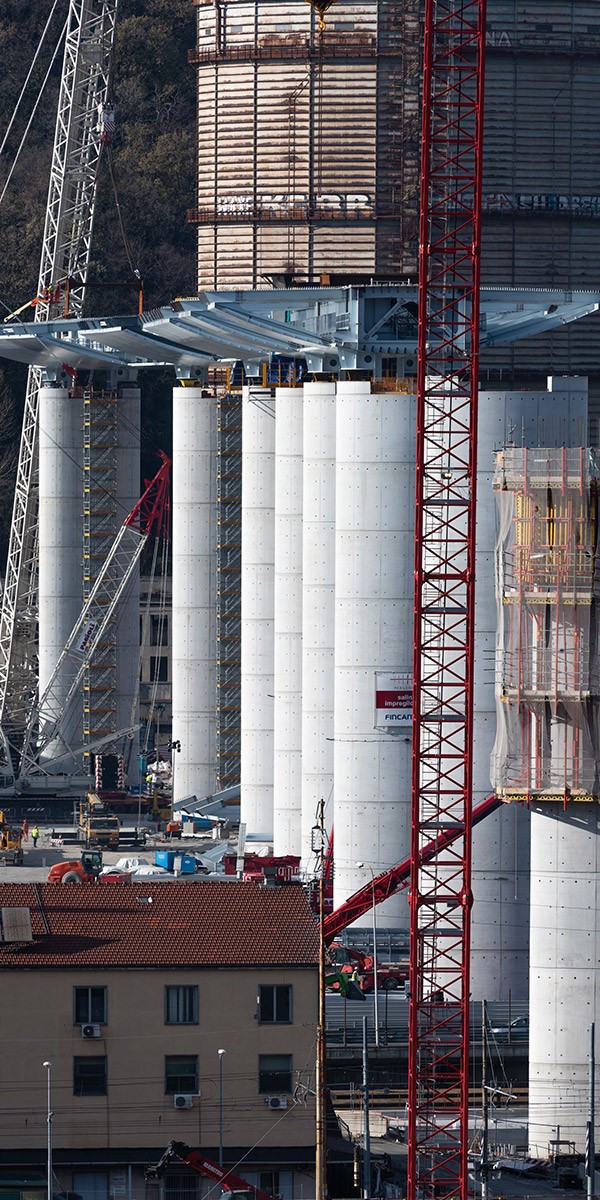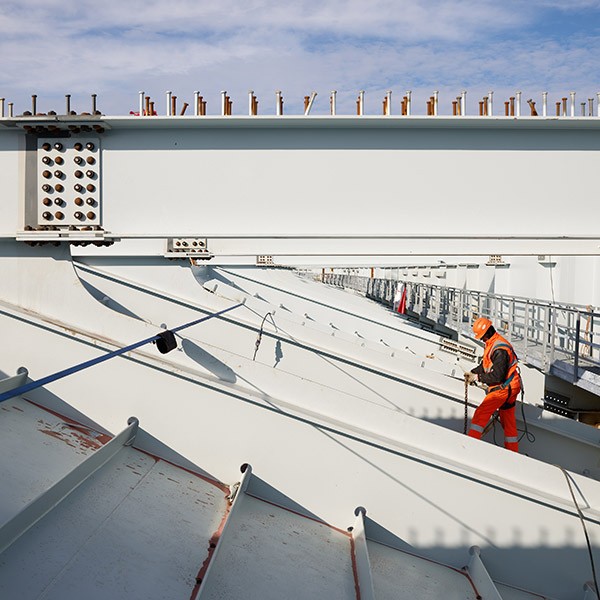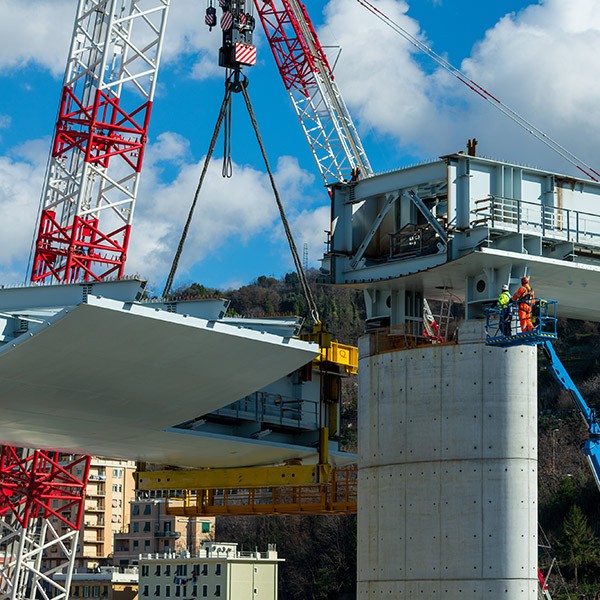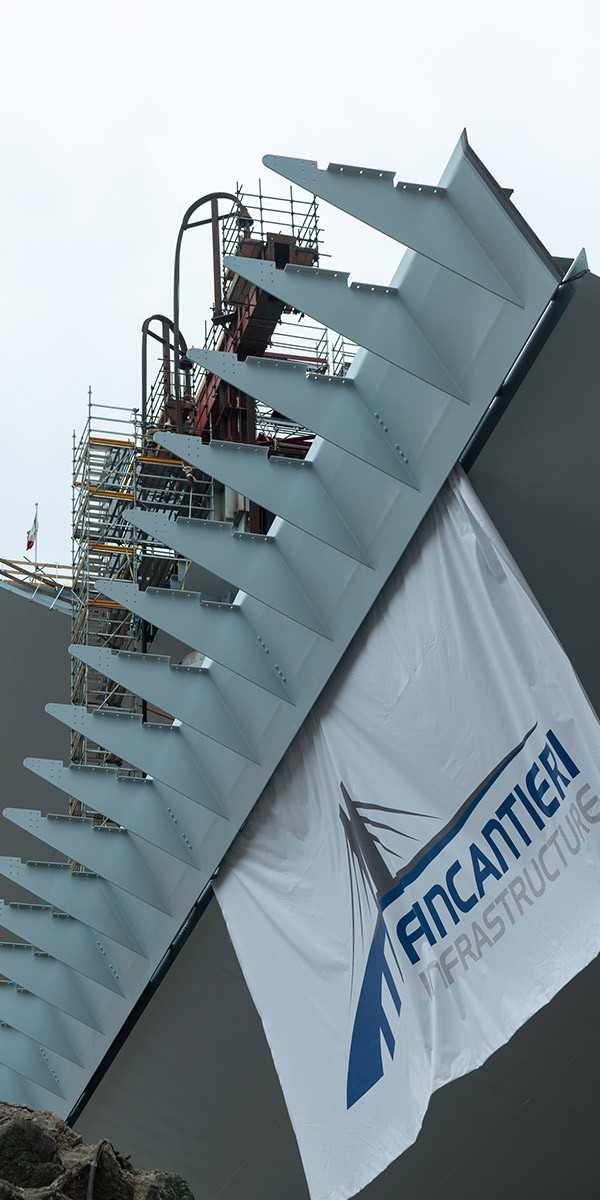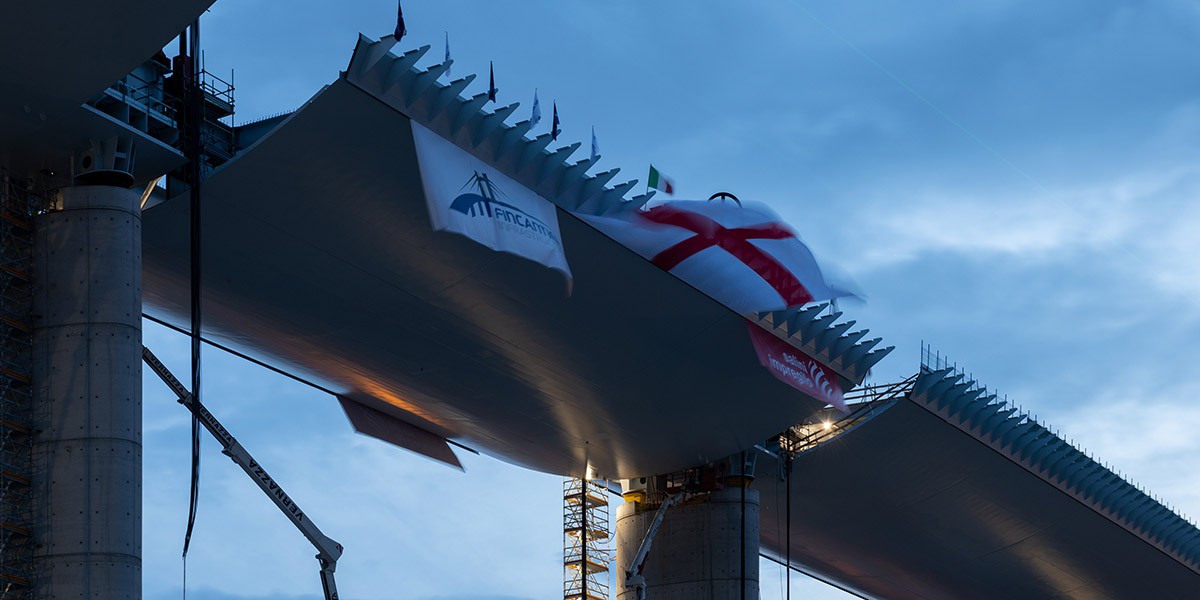"Simple and parsimonious, yet not trivial. It will look like a ship moored in the valley; a light, bright steel bridge. During the day it will reflect the sunlight and absorb solar energy to return it at night. It will be a sober bridge, respecting the character of the Genoese"
Renzo Piano
The reconstruction of the bridge has become the symbol of the rebirth of a great city like Genoa, but also of a new phase of the country’s development. It shows that in Italy too, it is possible to build infrastructures with certain times and costs, from the stage of identifying the needs to execution. The Genoa project has represented a model of collaboration among large Italian companies that are mutually supportive of each other, placing a unique industrial heritage at the disposal of the city and the country.
The Project
The viaduct over the Polcevera is an essential junction connecting Genoa with France, the port and, more generally, the surrounding areas. It is an essential element that allows the city to reclaim its role as a great port and trade hub. The Bridge is made of a continuous steel deck extending 1,067 metres with 19 spans. The 18 elliptical piers of reinforced concrete are positioned at 50-metre intervals, except for the span over the Polcevera river and the neighbouring ones, where two of the piers are 100 metres apart. This solution has optimized the structure and foundations, limiting their dimensions, especially in such a highly urbanized area.
The Construction
The building site of Genoa – Sestri Ponente was employed to build the steel units, as well as the plant in Valegio sul Mincio (Verona) and the shipyard of Castellammare di Stabia.
The steel deck was produced in macro structural elements that were then brought on site, assembled and welded together, the production of every single span being completed on the ground. This solution has kept work at height to a minimum.
Lifting and Monitoring
The lifting process used mainly heavy-load lattice boom cranes. The 100-metre spans weighing over 1,800 tons, as well as the ending spans on each side of the bridge were lifted using special devices called “strand jacks”, which allowed the large decks to be aligned precisely in the space available between the structures already at height. This precise positioning was made possible thanks to the use of special hydraulic slides that had been purposely developed.
An integrated monitoring, control and inspection system was provided and installed in collaboration with Cetena and Seastema, the Fincantieri Group’s R&D companies based in Genoa.
Technology and Sustainability
The new bridge for Genoa is equipped with the most advanced technological tools available, such as robotic automation and sensor systems to monitor the infrastructure and its maintenance, as well as a special dehumidification system in order to avoid the formation of saline condensation and to limit corrosion damage. Furthermore, a database has been created to study and monitor the data and use them as a benchmark for the design of similar infrastructures with the same capacity in the future.
The environmental impact of the bridge is limited thanks to solar panels that produce the energy needed to run the bridge’s systems (lighting, sensors and machinery) both day and night.


